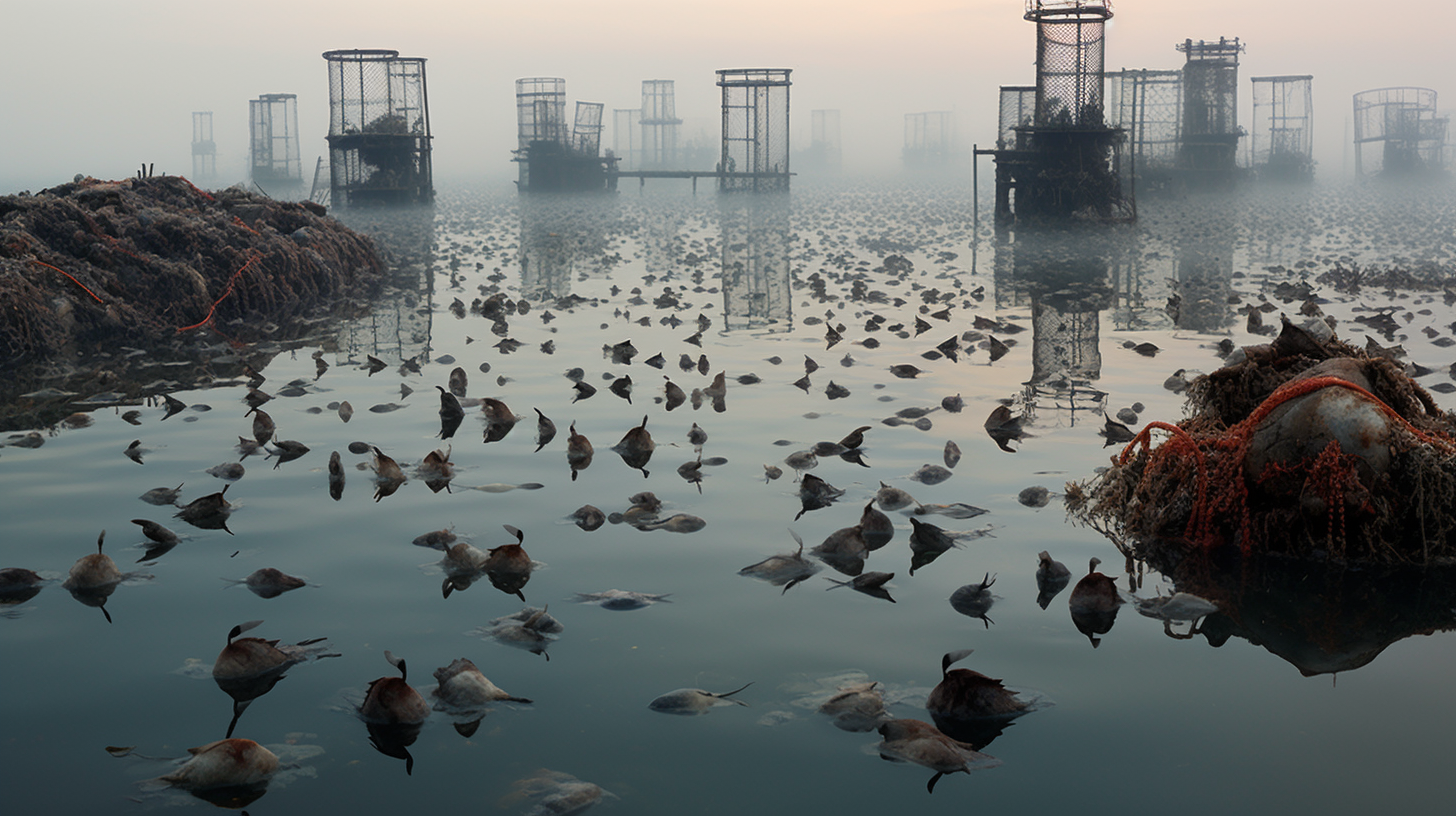In a world where the ocean’s surface whispers tales of ruin, the depths harbor their own somber hymn. There, nestled in perpetual darkness, lie the Brine Pools of Despair – deathly silent lagoons on the seafloor, saturated with salt and suffocating to life. A continuation of our chronicled aquatic apocalypse, we delve into the chilling embrace of these aquatic anomalies.
Like eerie, underwater lakes within an ocean, these brine pools are the hidden graveyards of the sea. Their salinity levels are so extreme that their dense waters do not mix with the overlying sea, creating a slick, reflective surface that deceives as a gateway to a netherworld. But for unsuspecting creatures, this mirage is a silent siren’s call to a watery demise.
Imagine for a moment reaching out to touch what seems like the surface, only to find your hand slipping through a viscous barrier, like oil separating from water. This is the perplexing reality of the brine pool’s halocline, a stark transition between fresh blue and the murky stillness of the super-saline brine.
These pools are not mere oddities; they are vestiges of ancient microbial life, archaeal organisms that thrive in the hostile environment where few others can. The super salinity allows for unique chemosynthetic ecosystems, hidden away and decoupled from the sunlight’s bounty. Yet, here in our dystopian present, they also serve as a metaphor for our own environmental transgressions – isolated, bizarre, and lethal to most non-adaptive lifeforms.
The brine pools have become silent sentinels witnessing the gradual collapse of biodiversity. As marine species flee from the toxic soup we’ve brewed above, the depths offer no refuge—only different shades of inhospitable expanse. In these pools, we find the carcasses of creatures that ventured too close, preserved in an eerie stasis, reminiscent of the ill-fated Pompeii.
But do not be fooled, the pools are not the architects of this despondency; they are but natural phenomena, twisted mirrors reflecting back our own ecological sins with unsettling clarity. And if one listens closely, the deadened stillness of these pools whispers the ultimate irony: they are, perhaps, the last oases in a sea of poison, yet even these sanctuaries spell certain death.
As writers, we often seek glimmers of hope, a redemption arc in our tale of the Anthropocene. Yet in these brine alleys of oblivion, there seems little reprieve to write of. In an ocean already battered by our chemicals and our waste, the brine pools remind us starkly of nature’s indomitable force – adaptive in ways, but unyielding in others. Escape is a fleeting dream, and adaptation, a cruel predicament.
For now, these pools remain an enigma, wrapped in the riddles of our planet’s changing chemistry. And so they shall stay, perhaps long after the echo of human folly fades into a silence as profound as that which lingers over their saline shores.
Our descent into this post-apocalyptic marine world continues to unveil moments of unsettling beauty and symbolisms of our neglect. The Brine Pools of Despair are less an anomaly and more a profound statement of seafloor sorrow, a mirror showing us the haunting consequences of our disregard for the ocean’s delicate harmony.
Yet, in the darkness of the deep where light never ventures, a macabre dance ensues – life, against all odds, persists. Those hardy microorganisms ensconced within brine, perhaps the unsung heroes of resilience or the portentous harbingers of life’s bleak future on an abused planet. Either or neither, they are, for now, the stoic survivors in an ocean graveyard.
Our exploration into nature’s peculiarities in this dystopian seascape must conclude here, leaving behind the watery crypts of the deep – their stories etched in saline, their existence a cautionary echo across time and tide.
